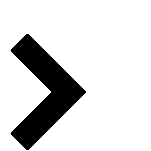REVIEWED P2 OPTIONS
| ||
Reviewed Metal Finishing OptionsFollowing are a list of options that have been reviewed by pollution prevention specialists. These options have worked at other facilities and may work at yours. |
||
Reduce and Recover Drag-out/Drag-in | ||
| Reducing and recovering drag-out is one of the simplest and most cost-effective pollution prevention strategies to implement. Drag-out can be reduced and recovered by numerous procedure changes that require minimal capital investment. This includes installing drain boards, extending drain times, controlling the rate and angle of parts withdrawal, and maintaining barrels and racks properly. Efforts to reduce and return drag-out will be rewarded with savings in chemical purchases, water consumption, treatment chemicals, and sludge disposal. Drag-out reduction can improve quality by keeping rinses and subsequent tanks cleaner. Drag-out recovery, however, can cause contamination of plating tanks, depending on the quality of the drag-out returned. So care should be taken to ensure that drag-out return does not carry contamination into process tanks. Minimizing drag-in essentially relies on using the methods described for minimizing drag-out on the tanks preceding plating tanks. The financial benefits of this approach, however, are slightly different. The primary benefits will be a reduction in the number of bath dumps and an improvement in the quality of plating processes. | ||
Drag-in/Drag-out Rinsing | ||
| In this application, the first rinse following the plating tank is also used as a pre-dip before plating. This can be accomplished by using either one tank or two connected rinse tanks. This is especially useful for unheated plating tanks. Instead of carrying water into the plating tank with each load, a more concentrated solution is carried in with each load. This will limit chemical usage, save water, and reduce treatment costs and sludge disposal. | ||
Air Agitation | ||
| Providing air agitation to rinse tanks keeps rinse waters well mixed and helps remove plating solution that is clinging to the workpiece. Low-pressure blowers are available for air agitation (e.g., a 6-foot-deep rinse requires 3 psi). Blowers require less energy than compressors, and will pay for themselves in terms of energy and maintenance savings. They also prevent the introduction of oils to the rinse. Air agitation should be turned off when the tank is not in use since the air can introduce contaminants and cause carbonate buildup. | ||
Counterflow Rinsing/Double Dipping | ||
| Counterflow rinsing, also referred to as countercurrent or staged rinsing, uses a minimum of two rinse tanks connected in series. Essentially, the process involves rinse water and parts moving in opposite directions. Each added tank typically will reduce water consumption by 50%, depending on factors such as rinse tank agitation and drag-out. If limited shop space or lack of capital precludes additional tanks for counterflow rinsing, rinsing twice in the same rinse tank, or double dipping, is an alternative. It isn’t as effective as counterflow rinsing, but it is more effective than rinsing the workpiece only once. | ||
Flow Restrictors | ||
| If conductivity meters are not used, flow restrictors can be a simple and inexpensive method for reducing water consumption. Flow restrictors are ideally suited for shops that have constant production rates. They are most effective when coupled with timer controls to ensure that rinse water only flows during rinsing operations. | ||
Timer Controls | ||
| Timer controls work in a similar way to conductivity controls, but regulate rinse rate based on a set time. Timer controls will generally have similar cost savings as conductivity controls, but will probably not result in a significant improvement in quality. | ||
Conductivity Controls | ||
| The quality of rinse water should never be judged merely by appearance. Conductivity controls are used to keep the rinse tanks operating at a desired conductivity set point and remove much of the guessing in terms of rinse quality. Even a $40, hand-held conductivity meter is a worthwhile investment to evaluate the condition of rinse water. | ||
Reactive Rinsing/Spray Rinsing | ||
| Reactive rinsing, also referred to as paired rinsing, consists of using the overflow from an acidic rinse as the feed to a base rinse. This is a fairly simple process and can be achieved using a low-flow pump, such as a bubble pump. The base rinse will begin to precipitate salts, but this is mostly an aesthetic problem. In fact, the base rinse will perform better due to the continuous neutralization from the acid feed. Also, the acid bath will last longer without the base dragging in. Spray rinsing can be performed over plating, drag-out, and rinse tanks. It reduces the amount of rinse water used and can reduce chemical usage if the rinse is recovered into plating tanks. | ||
Rinse Water Recovery into Cleaning/Plating Tanks | ||
| For solutions maintained at elevated temperature, the reuse of rinse water into plating tanks can offer many advantages, including reduced chemical and water usage and reduced treatment and sludge disposal. For this method to be effective, rinse waters need to be fed with deionized water, so that plating tanks do not become contaminated with the impurities typically found in tap water. In addition, holding tanks and filtration may be necessary. The plater must be cautious of adding contaminants with the saved rinse, as they will concentrate during evaporation. Greater care must be taken with bath maintenance and more frequent bath analysis may be necessary. Reactive rinsing would preclude this option for acid and base tanks. | ||
Extend Bath Life | ||
| Tap water has a number of impurities, including carbonate, phosphate, and silicate, which can decrease bath life and increase sludge buildup. Given that bath dumps can be expensive, efforts to increase bath life should be a high priority. The facility described in the case study below installed a deionized water system; began monitoring bath chemistry and installed a continuous filtration system costing; and modified its rinsing system. Another innovative option to consider is the reuse of collected rainwater, since it is low in minerals. | ||
Operate Baths at Minimal Concentration | ||
| Operating baths at the lowest possible concentration reduces the amount of chemical usage for bath make-up and may also reduce drag-out. Drag-out losses are affected both directly by the lower concentration and indirectly by the reduced viscosity of the solution. One possible drawback to this approach might be the need to increase the plating time, particularly with applications such as hard chrome. If electricity is a large expense at the facility, reducing the concentration on heated hard chrome baths may have the unintended side effect of increasing energy consumption. | ||
Recover Scrubber Blowdown into Plating Tanks | ||
| Using mesh pad mist eliminators and recovering chromium has been reported as an effective means to reduce human exposure, while recovering valuable chemicals. It is primarily used in decorative and hard chrome applications. | ||
Reduce Peak Demand/Tank Heating | ||
| Monthly electricity rates are often based on the peak 15- or 30-minute demand registered by the electric meter. Equipment that uses large amounts of power (e.g., induction loads) should not be started all at once, but instead staged. Heating tanks can account for more than 40% of energy costs. Bath additives are available for some processes that allow for a lower temperature to be used. Efforts to reduce evaporation will also pay off, since more than 70% of heat loss from tanks occurs due to evaporation. Significant savings can be realized by using ball blankets to reduce tank surface area and by covering tanks when not in use. With hot alkaline cleaning tanks, a simple strategy is to bubble a small amount of air into the tank to create a foam (soap bubble) blanket over the solution. The air should be introduced into the tank so that it moves oils toward the overflow weir. Strategies to reduce evaporation will provide savings in both electricity and water consumption. Covering tanks when not in use may also improve quality by minimizing contamination. | ||
Reduce Contact Resistance | ||
| Keeping contacts and bus bar connections tight and free of corrosion is a low-cost way to save energy by reducing energy (heat) loss. A slight voltage drop across contacts or increased temperature of the connection area suggests attention is needed. Electrical joint compounds can be helpful in reducing contact corrosion. | ||
Improve Lighting | ||
| Lighting can account for 15% of the energy at a metal finishing company. Lighting requirements can be reduced using skylights or natural light, by installing motion sensors or timer controls, and by turning off lights when an area is not in use. Painting floors, ceiling, and walls white can increase reflectance, thus reducing lighting requirements. | ||
Conserve Compressed Air | ||
| Although often overlooked, even small air leaks can cost hundreds of dollars per year. Leaks should be repaired quickly. A 3/8-in. air leak can represent more than $2000 per year in costs (at 100 psi, $0.06/kWh, and 4000 hr/yr). Compressor efficiency can be improved when air intakes are located in a cool place (e.g., a shady area) and away from exhaust heat sources. Operating compressed air systems at higher pressures than required also costs a lot of money. It may be economical in cases such as air agitation to use blowers instead of compressed air. | ||
 Find Options for other processes
Find Options for other processes





